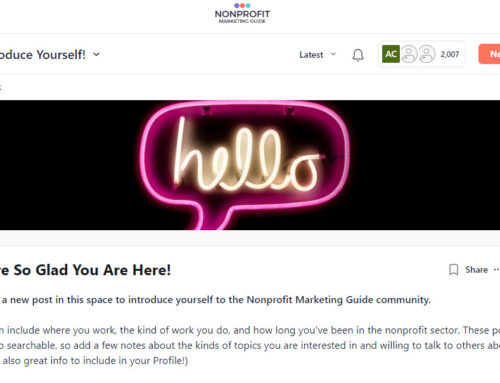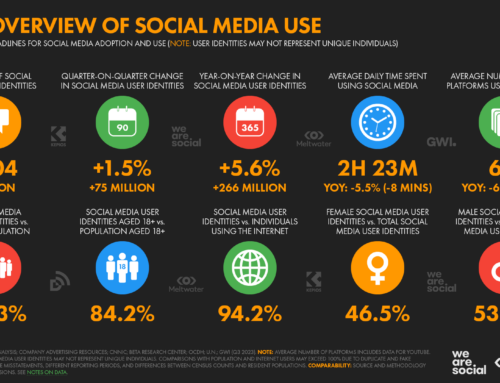 I made a mistake when I started reading The Networked Nonprofit (Amazon link) by Allison Fine and Beth Kanter. I thought it was going to be a book about social media, and it is, of course, but it’s much bigger than that. I recently interviewed Allison about the book, which I highly recommend not only to communications directors, but to executive directors and board members too.
I made a mistake when I started reading The Networked Nonprofit (Amazon link) by Allison Fine and Beth Kanter. I thought it was going to be a book about social media, and it is, of course, but it’s much bigger than that. I recently interviewed Allison about the book, which I highly recommend not only to communications directors, but to executive directors and board members too.
Kivi: I suspect a lot of people assume this is a book about social media (as I did), but it struck me as being much more about nonprofit management — and how what we think of as these shiny new tools, like Facebook fan pages, are actually creating some pretty profound ways in which nonprofits function.
Allison: In our research we found that all Networked Nonprofits had a way of being that led to a way of doing. The way of being includes being transparent, simple, networked, social and very good using social media. So, before jumping into setting up Facebook accounts and blogs, it’s very important that organizations think hard about how they operate, what their orientation is to the world, what they fear about opening themselves up before jumping into “doing” social media.
Kivi: I really appreciated the message of Chapter 7 – that to be a networked nonprofit, and to fully take advantage of social media and your network, you really have to simplify your organization. Yet, I suspect most nonprofits see social media as adding yet another layer of complexity or things-to-do to their lists. Explain how social media can actually help nonprofits make things more simple and streamlined.
Allison: Networks thrive on simplicity. Complex ideas and actions slow everything down and make it difficult for people on the outside to participate and contribute to nonprofit efforts. Beth is such an expert on how to streamline the use of social media to make it manageable, how to filter your Inbox and set up your viewing systems and manage your Twitter stream to cut down on the distractions and help you get to the real stuff.
And you’re just right, it’s not about adding social media to the stuff you do but rethinking everything that your organization does and incorporating social media habits, tools and processes into it. Every organization has a bunch of things it does out of fear or habit that they don’t need to do.
For instance, I was talking to an organization that other day that continues to spend a lot of time putting together an e-newsletter that no one reads. Get rid of it, think about what conversation you really want to have with whom and try a blog instead or have a conversation on Twitter. One of our favorite lines in the book is, “Do what you do best and network the rest.”
Kivi: The second part of the book focuses on crowdsourcing, learning loops, friend-to-friend fundraising, and governance issues. I sit on two very different boards right now, so I found the ideas on using social tools to improve the ways that boards work to be really interesting. What kind of reaction are you getting to that chapter?
Allison: We really struggled with the governance chapter. Beth wrote a great blog post about it a couple of weeks ago. Boards are such a “hands off” topic for nonprofits, there is such a level of deference to them and assumption that they way they have always worked, using Roberts Rules of Orders, stuffed with lawyers and financial guys, focused on profit/loss statements, is the only way they can and should work.
We are hoping that chapter starts a conversation about what is possible if boards got themselves away from the boardroom and opened up the processes of governance to their networks. I think it’s the next wave of change that will happen to the sector – at least I hope it is!
Kivi: You talk repeatedly throughout the book about the dangers of silos and yet I think most nonprofits still want to shove social media into a silo, whether it be communications, development, or IT. As you’ve been talking about the book with people over the last several months, do you see any evidence that the silos are coming down?
Allison: Absolutely. For organizations born as Networked Nonprofits, like MomsRising and charity:water, they are less silo’d from the get go because of the social cultures – everyone in their organizations is facile with social media and comfortable engaging online with their networks. More traditional organizations, like Planned Parenthood, the National Wildlife Federation, and Environmental Defense are opening themselves up online, slowly, it takes some time, and by doing so the lines get blurred between departments internally and between inside and outside. It is inevitable as social media doesn’t recognize the boxes in organizational charts.
Ready to learn more about how social media can make your organization as a whole more effective? Get your copy of The Networked Nonprofit (Amazon).






